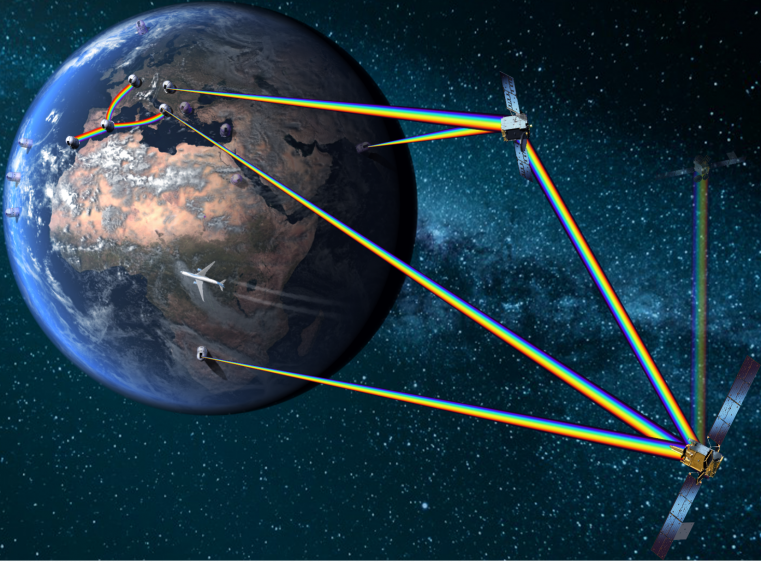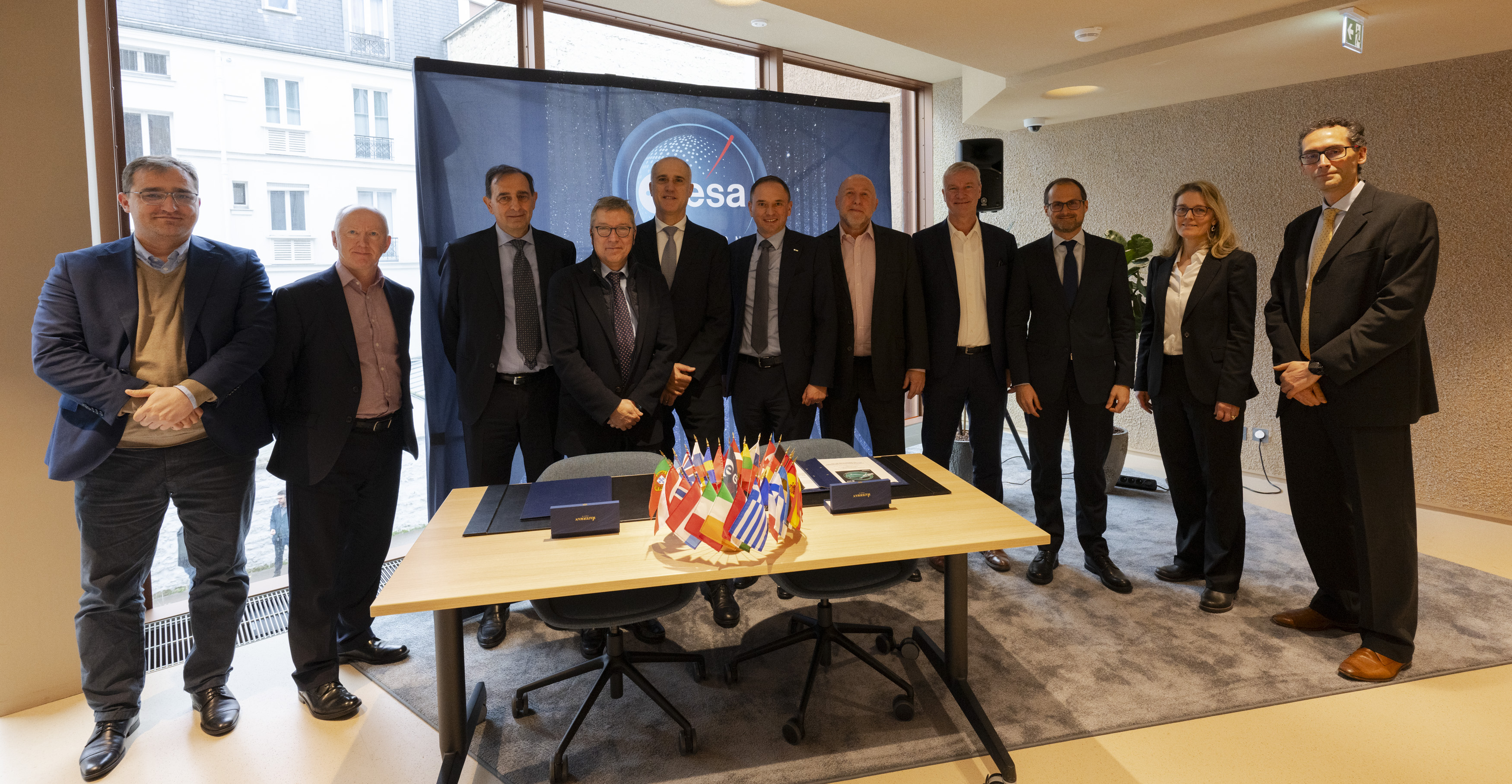HydRON moves into next phase with Thales Alenia Space to develop optical LEO multi-orbit extension layer

The European Space Agency (ESA) has signed a contract with Thales Alenia Space to develop Element #2 of the High-throughput Digital and Optical Network (HydRON) project, marking a significant step forward in space-based optical communications. The signature took place on 13 February between Laurent Jaffart, Director of ESA’s Connectivity and Secure Communications, and Antonio Sturiale, Director of Telecommunications for Thales Alenia Space in Italy.
The contract encompasses the development of a low Earth orbit (LEO) satellite collector equipped with advanced end-to-end optical communication capabilities, along with a comprehensive ground segment infrastructure. The system builds on the Element #1 LEO Ring developed by Kepler Communications, announced at the International Astronautical Congress in 2024, which will allow HydRON evolve into a multi-layer system with terminals linking between LEO and geostationary orbit (GEO) and the Earth. HydRON aims to contribute to the broader vision of seamlessly integrating space and terrestrial networks, with each element being interoperable with each other.

Element #2 will extend data availability to enhance user data rates and reducing cost for every bit/s. By bringing together the expertise of a wide range of ESA Member States, Italy, Germany, Switzerland, Poland, Ireland, and Romania, with more Member States expected to join as the project evolves, Element #2 will provide a high level of availability for its optical feeder link (a communication link that uses optical technology to transmit data between two locations, one in space and one on Earth). HydRON benefits from bringing together various Member States for each of the three elements, with Element #3 developing a demonstration/service user segment with commercial and institutional partners, as well as long standing support from the German Aerospace Centre (DLR). The launch of Element #2 is targeted for 2028, with a two-year in-orbit validation phase planned between 2028-2030.
HydRON, which forms part of the Optical and Quantum Communications – ScyLight programme within ESA’s Connectivity and Communications, additionally brings together cutting-edge technologies from industry leaders across Europe. Mynaric will develop the advanced optical communication terminals for the LEO collector, whilst Thales Alenia Space will provide the state-of-the-art on-board packet router. The ground segment includes fixed and transportable optical ground stations developed by DLR-IKN and Officina Stellare respectively, alongside the HydRON Control Centre developed by Telespazio with support from Thales (Romania). Mbryonics will contribute optical testbed facilities to support the programme.
As the project progresses, a GEO payload component featuring optical terminals will be built by Thales Alenia Space in Switzerland and an on-board packet router built by Thales Alenia Space in Italy.

"It was an honour to sign this contract with Thales Alenia Space today, which moves us closer to establishing Europe's first optical communication network in space," said Laurent Jaffart, ESA’s Director of Connectivity and Secure Communications. "HydRON is set to maintain Europe and Canada as global leaders in the optical domain and, with the system being interoperable, it will ensure that we continue to grow ESA’s cooperation with our international partners.”
“I am really pleased Thales Alenia Space will be contributing to Europe’s technological independence in connectivity services through space,” said Giampiero Di Paolo, Deputy CEO and Senior Vice President, Observation, Exploration and Navigation at Thales Alenia Space. “Thales Alenia Space believes HydRON Demonstration System is the key enabler for the reliability and operability of a high-throughput optical network in space, paving the way for the future of commercial optical communications in Europe and globally.”


